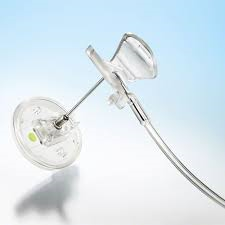Gums Cut Healing Guide

The delicate balance of oral health can be easily disrupted by something as common as cutting your gums. Whether it’s from a slip of the toothbrush, a rogue dental floss, or an accident while eating, a cut on the gums can be painful and potentially lead to more serious issues if not properly cared for. The healing process of gum cuts, though relatively straightforward, requires attention to detail and adherence to good oral hygiene practices to prevent infection and promote rapid recovery.
Understanding Gum Cuts
Before diving into the healing process, it’s essential to understand what gum cuts are and how they occur. Gums, or gingiva, are the soft tissues that surround and support the teeth. They are relatively resilient but can be injured by sharp objects, rough handling, or sometimes even by the foods we eat. The severity of a gum cut can vary from a minor abrasion that heals quickly on its own to a deeper cut that may require medical attention.
Immediate Care for Gum Cuts
The first step in healing a gum cut is immediate care. This involves a series of simple yet crucial steps:
Stop the Bleeding: Apply gentle pressure to the cut using a clean cotton ball or gauze for a few minutes. This is usually sufficient to stop the bleeding. For more severe cuts, you might need to apply pressure for a longer period.
Rinse with Salt Water: Once the bleeding has stopped, rinse your mouth with warm salt water. Dissolve a teaspoon of salt in a cup of warm water and swish it around your mouth, making sure to get the solution over the cut. Salt water helps reduce swelling and kills bacteria.
Apply a Cold Compress: If your gum is swollen, apply a cold compress to the outside of your cheek near the cut. This can help reduce swelling and ease pain.
Maintain Good Oral Hygiene: Continue to brush and floss your teeth as usual, but be gentle around the cut. You might want to use a soft-bristled toothbrush and avoid using dental floss around the injured area until it has healed.
Promoting Healing and Preventing Infection
Healing a gum cut and preventing infection require consistent effort and attention to oral hygiene:
Keep the Area Clean: Regular rinsing with salt water can help keep the area clean and promote healing. You can also use an antibacterial mouthwash if recommended by your dentist.
Monitor for Signs of Infection: Keep an eye out for signs of infection, such as increased redness, swelling, pus, or fever. If you notice any of these symptoms, contact your dentist.
Eat Soft Foods: For a few days, eating soft foods can help avoid irritating the cut further.
Avoid Smoking and Tobacco: Smoking and tobacco use can significantly slow down the healing process and increase the risk of infection.
When to Seek Professional Help
While many gum cuts can be managed at home, there are situations where seeking professional help is advised:
Deep Cuts: If the cut is deep or bleeding heavily and doesn’t stop with pressure, seek immediate medical attention.
Signs of Infection: If you notice signs of infection, such as pus, increased pain, or fever, contact your dentist.
Persistent Pain: If the pain is severe and doesn’t improve with over-the-counter pain relievers, consult your dentist.
Conclusion
Healing a gum cut requires patience, good oral hygiene, and sometimes professional dental care. By understanding the nature of gum cuts, taking immediate care, promoting healing, and knowing when to seek help, you can ensure that your gums heal properly and reduce the risk of complications. Remember, if in doubt, it’s always best to consult with a dental professional for personalized advice and treatment.
How long does it take for a gum cut to heal?
+The healing time for a gum cut can vary depending on the severity of the cut. Minor cuts can heal within a few days, while deeper cuts may take a week or more to heal completely.
Can I use hydrogen peroxide on a gum cut?
+It’s generally not recommended to use hydrogen peroxide on a gum cut. While it can help kill bacteria, it can also damage the gum tissue and slow down the healing process. Instead, stick to salt water or an antibacterial mouthwash recommended by your dentist.
How can I prevent gum cuts in the future?
+To prevent gum cuts, be gentle when brushing and flossing your teeth, avoid using sharp objects in your mouth, and eat carefully to avoid accidental bites or cuts. Regular dental check-ups can also help identify any potential issues before they become serious.



